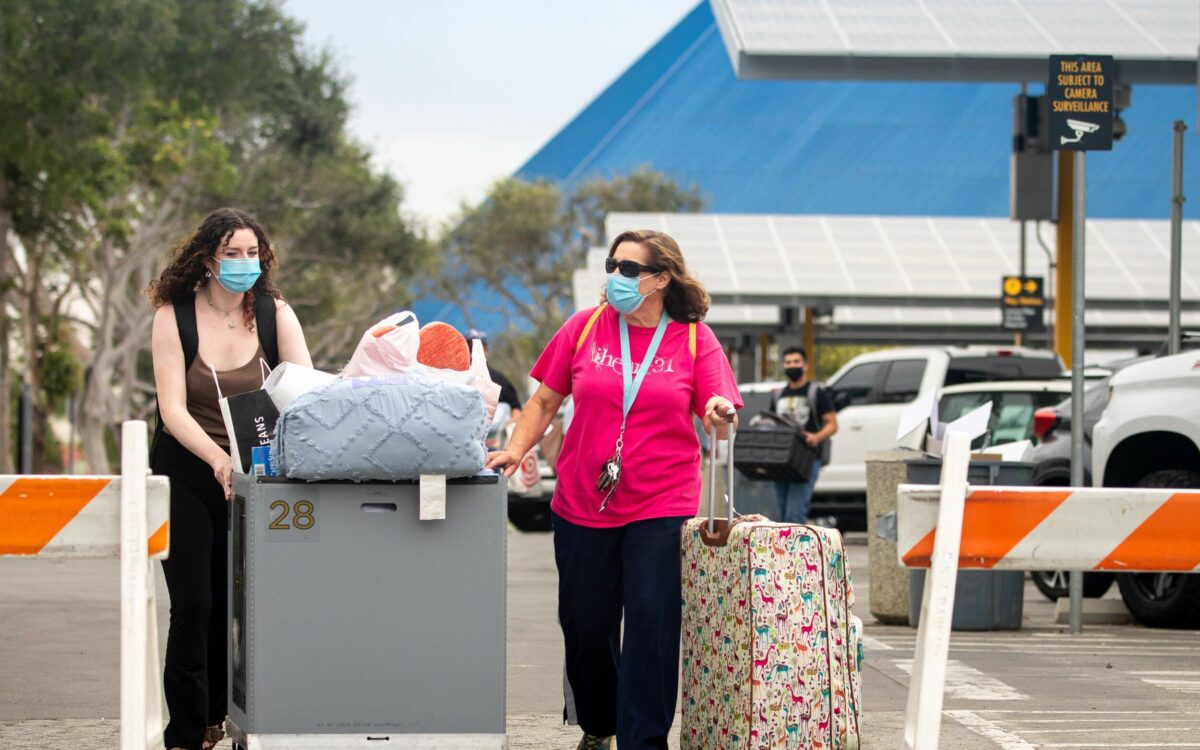Ask any university official, and they’ll say all classes of students are important to keep an eye on as they progress from freshmen to seniors.
But for California State University, this fall’s incoming Class of 2025 is particularly important. That’s because of a 10-year plan — known as Graduation Initiative 2025 — that started in 2015 to increase freshman and transfer students’ graduation rates across all 23 campuses.
“All of our incoming classes are important to us, but this class will represent the graduating Class of 2025, and isn’t it ironic that they are also very unique in terms of their experience prior to arriving?” said James Minor, assistant vice chancellor and senior strategist for the system.
“I don’t think ever in modern history that we’ve had an incoming class that has had the high school experience of the last year and a half leading up to college that this incoming class has had.”
The coronavirus pandemic has had an unprecedented impact on nearly every aspect of college life. Last year, CSU saw graduation rates steadily improve despite the Class of 2020 completing their degree mostly online.
But with over a year and counting of online classes and social distancing, questions remain over the long-term effects of the pandemic on students and graduation rates.

And there’s a special focus on the impact on the approximately 65,000 freshmen coming to campuses this fall.
Like many freshmen, Adrian Muguiya, a film student attending California State University, Northridge, is ecstatic to start his college career. But it’s also bittersweet.
“It’s so exciting finally going to college,” said the 18-year-old. “You think you’re going to meet new people, but now with the pandemic, it’s kind of like no, just no … it’s just sad. I can’t meet new people and … how long am I going to be online?”
In 2015, the CSU system set 2025 goals to increase the four-year graduation rate for first-time students to 40% and the six-year goal to 70%. When the initiative was launched, the completion averages for students who started as full-time freshmen were just 19% after four years and 57% by six years.
The initiative also set graduation goals that would eliminate racial equity gaps and eliminate those gaps between low-income students and their peers from families with higher incomes.
Last year, the four-year rate increased to 31% and the six-year graduation rate remained at 62% from the previous year.
“What’s special is the individuals who are represented in these percentages, so I am excited about the progress that we’re making,” Minor said. “All of these numbers reflect all-time highs for the CSU. But without question, we have a lot of work yet to do.”
That work has only become more challenging in the Covid era.
“The other interesting element about this academic year is that we probably know less than we typically would about who (this year’s freshmen) are,” Minor said.
Because of social distancing, remote learning and Covid restrictions, many California high school students didn’t sit for college entrance exams like the SAT or ACT. They may have even missed out on taking the Smarter Balanced assessment as 11th graders. They also may have struggled in virtual-learning environments in their last year and a half of high school, Minor said.
“Maybe some of them would have performed better than they would have in an actual school building,” he said. The high school grades that the campuses relied on to help understand incoming students are “probably less reliable than they have been in years past because the learning environments across the K-12 system have just been varied.”
Muguiya, the Northridge freshman, said when the Covid-19 pandemic hit in March 2020 he was a junior in high school and suddenly his classes shifted to 20-minute online sessions every day. That led to more free time, but he also noticed he would procrastinate his responsibilities and assignments more, he said.
In his senior year, classes returned to slightly longer times online, but he was seeing his teachers every other day, and “the fact that it was all online was a challenge. I was in my room and I could hear my bed screaming my name and saying, ‘C’mon let’s just watch some Netflix right now and completely zone out.”
Now, this year as a college freshman, most of Muguiya’s college classes will be online, except for a business course.
“There is a time limit for how long people can last under these conditions,” he said. “But at the same time, I’d rather be online in the comfort of my own home than exposed and potentially affecting someone or possibly having a huge Covid outbreak at CSUN.”

Isabella Garay, a freshman studying psychology at Cal Poly Pomona, said she didn’t have too many problems with taking online classes last year as a high school student, but she prefers that her college courses be in person. She’s enrolled in both in-person and online courses.
Garay worries that in online classes her professors will be more difficult to interact with than in in-person classes.
“They’re just going to see me through that little screen and there’s going to be so many kids and people in the Zoom room,” she said. “I don’t think I’m going to get that much of a connection with the teachers.”
CSU did make some changes as part of the graduation initiative that system leaders hope will help campuses deal with the unique challenges these students will face. For example, the CSU uses data to intervene with students before they get into trouble, like failing a course.
“If you arrived on college campuses prior to this initiative and you were struggling and failed three of your courses in your first semester, we didn’t know that until after it happened,” Minor said. Now, campuses are assessing students from the moment they arrive and provide extra support, counseling and tutoring before they can fail their courses, he said.
For campuses examining this freshman class, they’re going to have to learn as much as they can, as quickly as they can, and adjust when they need to, Minor said.
“My hope is that when we’re talking about this four years from now, a much higher percentage of those students are preparing to walk across the commencement stage,” he said.
